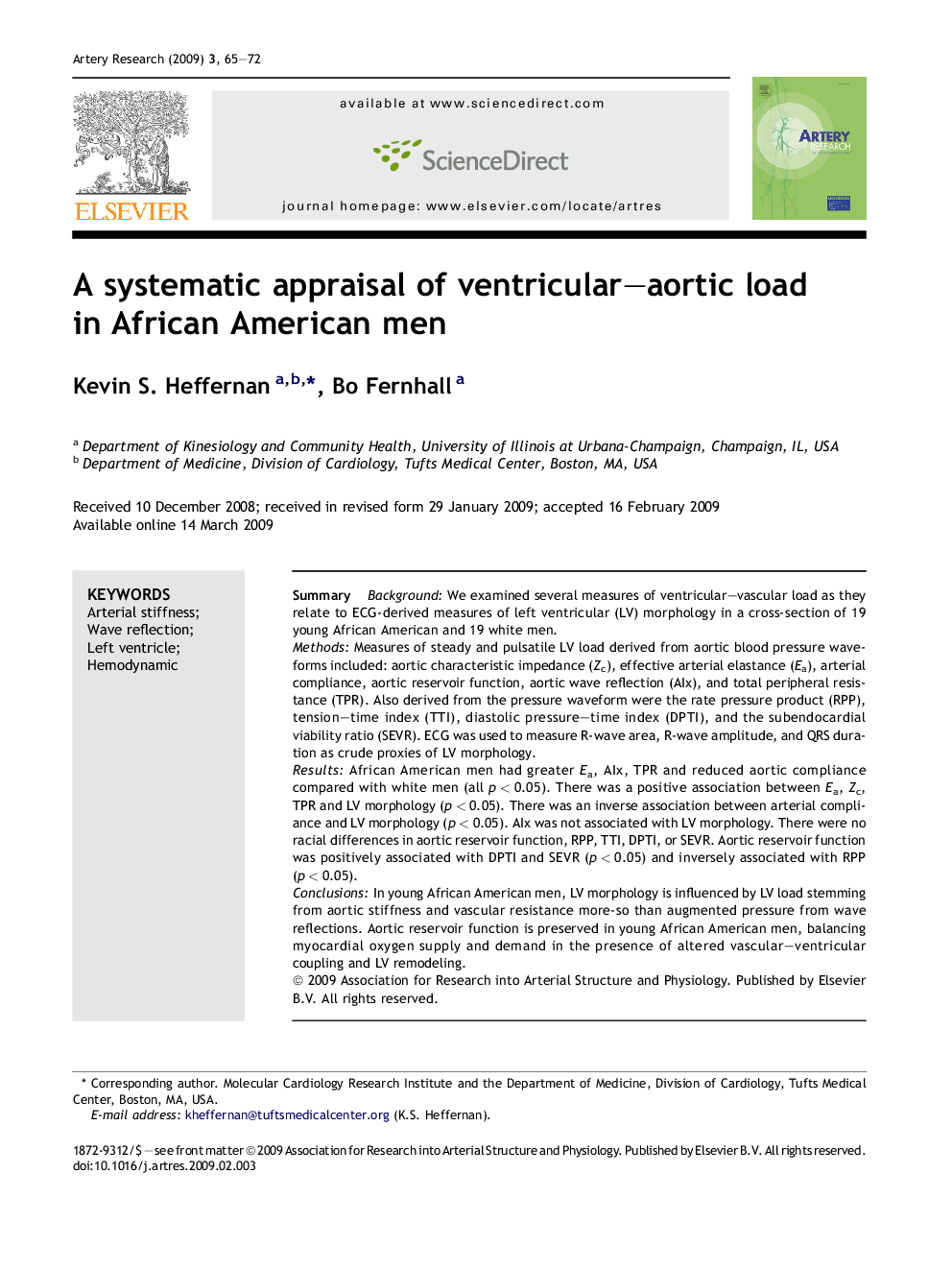| Article ID | Journal | Published Year | Pages | File Type |
|---|---|---|---|---|
| 2891955 | Artery Research | 2009 | 8 Pages |
SummaryBackgroundWe examined several measures of ventricular–vascular load as they relate to ECG-derived measures of left ventricular (LV) morphology in a cross-section of 19 young African American and 19 white men.MethodsMeasures of steady and pulsatile LV load derived from aortic blood pressure waveforms included: aortic characteristic impedance (Zc), effective arterial elastance (Ea), arterial compliance, aortic reservoir function, aortic wave reflection (AIx), and total peripheral resistance (TPR). Also derived from the pressure waveform were the rate pressure product (RPP), tension–time index (TTI), diastolic pressure–time index (DPTI), and the subendocardial viability ratio (SEVR). ECG was used to measure R-wave area, R-wave amplitude, and QRS duration as crude proxies of LV morphology.ResultsAfrican American men had greater Ea, AIx, TPR and reduced aortic compliance compared with white men (all p < 0.05). There was a positive association between Ea, Zc, TPR and LV morphology (p < 0.05). There was an inverse association between arterial compliance and LV morphology (p < 0.05). AIx was not associated with LV morphology. There were no racial differences in aortic reservoir function, RPP, TTI, DPTI, or SEVR. Aortic reservoir function was positively associated with DPTI and SEVR (p < 0.05) and inversely associated with RPP (p < 0.05).ConclusionsIn young African American men, LV morphology is influenced by LV load stemming from aortic stiffness and vascular resistance more-so than augmented pressure from wave reflections. Aortic reservoir function is preserved in young African American men, balancing myocardial oxygen supply and demand in the presence of altered vascular–ventricular coupling and LV remodeling.
